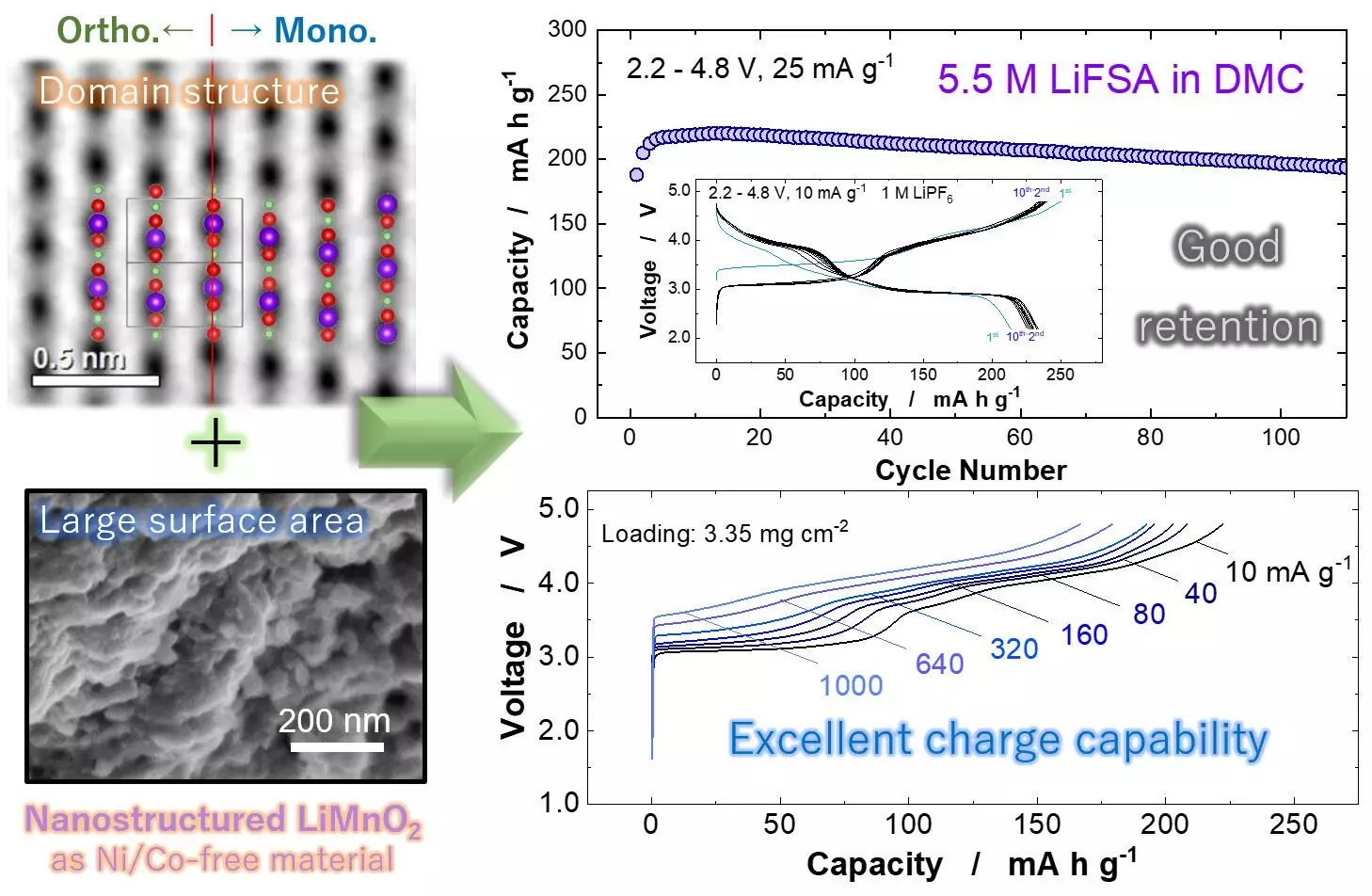As the world increasingly embraces electric vehicles (EVs) as a viable alternative to traditional combustion engines, the demand for efficient, cost-effective batteries has never been higher. Lithium-ion (Li-ion) batteries have dominated the rechargeable battery market for years, primarily relying on nickel and cobalt, two metals fraught with sustainability issues due to their availability and environmental impact. However, recent advancements in battery technology, particularly utilizing manganese (Mn), offer a promising pathway toward a more sustainable energy ecosystem.
The surge in electric vehicle adoption underscores a critical need: we require a rechargeable battery solution that is not only efficient but also economically accessible. The push for innovation in battery materials is vital in meeting global energy demands while ensuring environmental stewardship. By harnessing the power of manganese in lithium-based batteries, researchers are working towards achieving high-performance batteries that are more sustainable and affordable.
The Science Behind LiMnO2 Innovation
Manganese, often seen as a secondary contender in the battery materials contest, has the potential to reshape the market. Traditionally, LiMnO2 as an electrode material has faced challenges due to its subpar performance; however, recent studies have unveiled a breakthrough. By focusing on the monoclinic layered domain of lithium manganese oxide, researchers have discovered a way to enhance its structural stability and performance.
Naoaki Yabuuchi, a lead researcher in the study published in ACS Central Science, articulates this advancement with excitement. The innovative approach to synthesizing nanostructured LiMnO2 involved a straightforward solid-state reaction, bypassing complex intermediary steps. This streamlining of the synthesis process not only simplifies production but also makes it economically feasible for large-scale applications. With superior energy density—up to 820 watt-hours per kilogram (Wh kg-1)—this new formulation significantly outperforms traditional nickel-based batteries, providing a remarkable prospect for EV manufacturers.
Advantages Over Traditional Materials
One of the most significant achievements of nanostructured LiMnO2 is its capacity for rapid charging without the common issue of voltage decay that often plagues manganese-based materials. Voltage decay, which leads to diminished efficiency over time, is a concern that has historically limited the practicality of LiMnO2 in commercial applications. However, the new findings suggest that this issue can be prevented entirely, which is a game changer for manufacturers striving to deliver high-performance lithium-ion batteries.
The implications of this technology extend beyond just energy density and performance. By opting for manganese, which is more abundant than nickel and cobalt, the battery production process can pivot to more sustainable practices. With manganese’s lower ecological footprint and potential for lower material costs, the automotive industry might witness a revolution not just in battery technology, but also in the broader manufacturing landscape.
The Path Forward: Mitigating Challenges
Despite the promising advancements, challenges remain—most notably, the potential dissolution of manganese itself during battery operation. The issues of dissolution, often exacerbated by environmental factors such as acidic interactions, could restrict longevity and reliability. Thankfully, researchers have identified strategies, such as the use of highly concentrated electrolyte solutions and innovative lithium phosphate coatings, to counteract these effects effectively.
This proactive approach to problem-solving highlights the ingenuity behind the research and suggests a strong likelihood that nanostructured LiMnO2 could soon become a practical solution for the EV industry. By prioritizing both performance and durability, researchers are not just envisioning a new battery but empowering a shift toward fossil fuel alternatives that are environmentally friendly and sustainable.
A Future of Prospects
The journey to commercializing nanostructured LiMnO2 batteries is more than a scientific endeavor; it represents the confluence of technological progress and ecological responsibility. As society pushes for cleaner energy solutions, this innovation presents a tangible opportunity for a transition to sustainable technologies in the automotive sector. These advancements could establish rich potential not only in the luxury electric vehicle market but also across a wide spectrum of industries aiming to reduce their carbon footprint.
As we stand on the precipice of this technology’s application, the overarching sentiment is one of optimism. The marriage of manganese and lithium in battery development could redefine the future of energy storage, enabling a greener world where electric vehicles become a cornerstone of our daily lives. The forthcoming years will undoubtedly be crucial in determining how quickly and effectively these innovations can be implemented, marking a pivotal point in both the EV narrative and global energy practices.


Leave a Reply